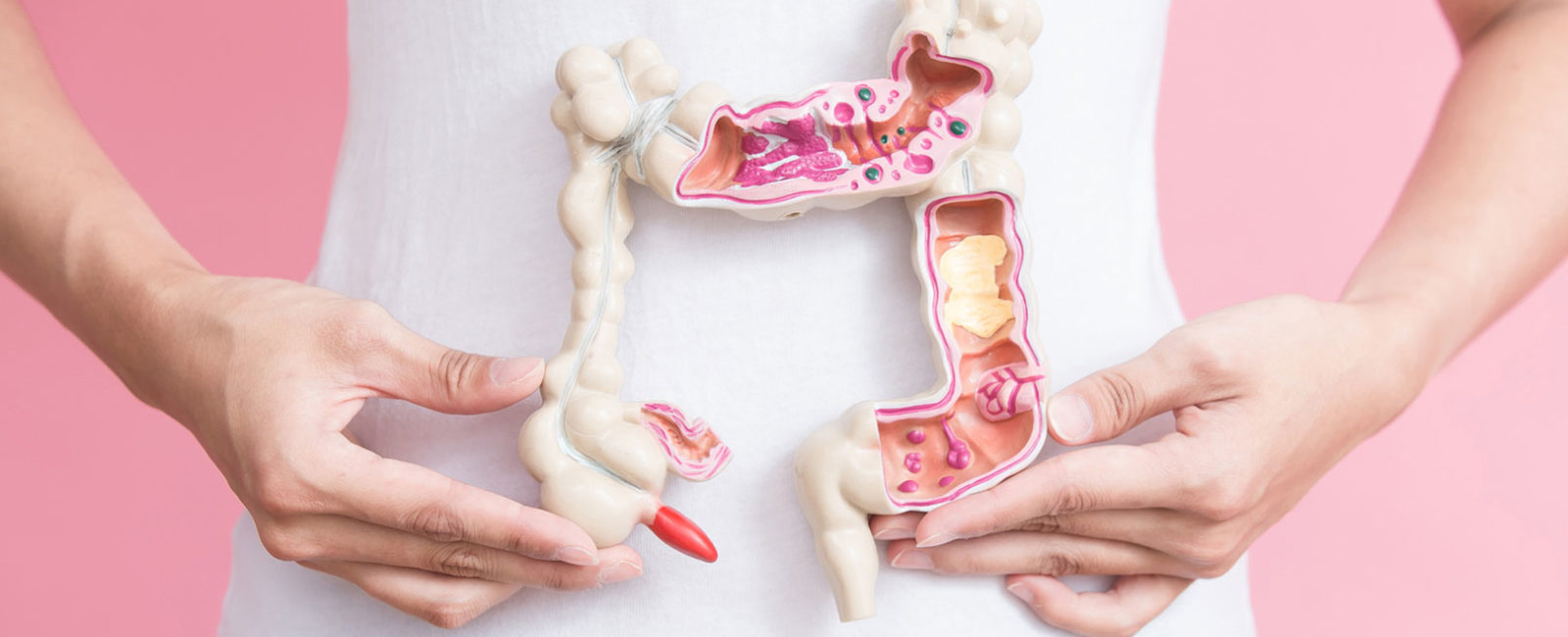The human intestine: A very special organ
The average length of an adult’s intestine is six metres. However, this is by no means the most amazing thing about this organ. The intestinal structure and processes are extremely complex – and as recent research results suggest, the intestine is responsible for much more than the digestion of food. It seems that it also has a significant influence on our physical and mental health.
The intestine is located between the stomach and the anus and can be roughly divided into three sections:
- small bowel
- colon
- rectum
Science has recently been paying special attention to the interaction of these sections – the intestine being viewed from a holistic point of view. Research results to date indicate two fundamental findings:
- The intestine can communicate directly with the brain and exchange information.
- The intestinal flora has a big influence on human health.
How exactly both work has by no means been conclusively researched. The more one learns about the organ, the clearer it becomes, how much the intestine does..
Communication between intestine and brain
The human intestine is, besides the brain, the only organ with completely autonomous nerve cells. This means that it does not need any stimuli from the brain to take over its many tasks. The union of nerve cells in the intestine is called the enteric nervous system (ENS). It is certainly not possible to think with it, but the ENS controls many processes independently, such as intestinal movements. The nerve cells in the intestine are very similar to those in the brain, can produce the same neurotransmitters and can therefore communicate with the cells in the brain.
However, this is not the only way of exchanging information between the two organs. The intestine is also the largest hormonal gland of the body and interspersed with enteroendocrine cells (EEZ). These cells produce hormones that can, for example, signal hunger to the brain.
It is even assumed that the intestinal flora can make direct contact with the brain. The totality of bacteria, yeast fungi and all other microorganisms in the intestine is known as the microbiome. It can produce biologically active substances, including neurotransmitters. These are precisely the substances with which nerve cells communicate – for example between the brain and the intestine.
The intestine and its microbiome
The microbiome is unique for each human, but the intestinal bacteria and other microorganisms always perform a variety of tasks. These include, for example, the conversion of indigestible substances into digestible ones or the strengthening of the immune system. The latest research suggests that the composition of the microbiome could also have very concrete effects on diseases as diverse as depression, obesity or diabetes. Which bacteria, fungi and viruses live in a person’s intestines could therefore affect his mental and physical health.
The intestine and its health
Science has not yet concluded its research on how the intestine communicates with the brain and does not yet know all the connections between the processes in the intestine and the health of the entire organism. It is considered certain that the communication takes place and that the intestine exerts a considerable influence on the general health of humans. Who cares about his digestive health, also does something for the well-being of body and soul.
But what can be done to support intestinal health? A balanced diet with lots of fruit and vegetables is a good start. Especially so-called probiotic foods seem to have a positive effect on the particularly helpful bacteria in the intestine. These foods include, for example, sauerkraut, yoghurt or kefir.
There are also dietary supplements that can support the intestinal flora. But before you do anything for a rehabilitation of your intestines, you should get to know your very personal microbiome. The intestinal flora self test of BIOMES is ideal for this.
Get to know your own microbiome with BIOMES
For the intestinal analysis INTEST.pro from BIOMES you can take a stool sample with a cotton swab at home, which will then be sent in and analysed. You receive the results digitally in a password-protected dashboard view. In addition to analyzing the intestinal flora and its weaknesses, BIOMES can also give you recommendations on how to support your intestinal health.
